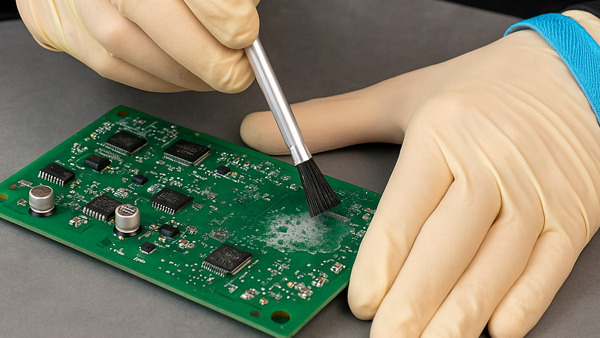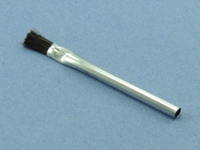|
Outline
Surface contaminants can significantly affect soldering, bonding, coating, and the electrical characteristics of printed boards and assemblies. This procedure outlines the cleaning methods for circuit boards and assemblies.
|
||||||||||||||||||||||||
|
Procedure
Caution: Use clean gloves during this entire operation.
|
||||||||||||||||||||||||
Images and Figures
Cleaning, Local

Figure 1. Cleaning a circuit board with an aerosol spray.

Figure 2. Using an acid brush to remove heavy contaminants.
|
||||||||||||||||||||||||
2.2.1 Cleaning, Local
Procedure covers localized cleaning of circuit board assemblies.
Minimum Skill Level: Intermediate
Conformance Level: High
REQUEST FOR QUOTE GUIDES INDEX

Cleaning, Local

Cleaning a circuit board with an aerosol spray.

Using an acid brush to remove heavy contaminants.

We're here to help with all your challenging circuit board and electronic component rework and repair needs.
LEARN MORE
SLIDESHOW STARTING
❮
❯










